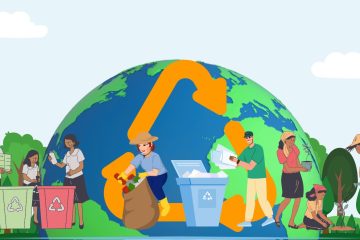Challenges in Plastic Waste Management: A Comprehensive Overview

Introduction
Plastic waste management is a complex issue that poses significant challenges to our environment and society. While recycling is often touted as the solution, it is not a safe and permanent solution for plastic waste disposal due to several reasons.
Degradation of Plastic Due to Recycling
Plastic deteriorates with recycling, reducing its lifespan. A virgin plastic material can only be recycled 2-3 times, and recycled plastic is of lower quality than virgin plastic. Thus, recycling is not a long-term solution for plastic waste disposal.
Recyclability of Plastic Categories
Of the seven categories of plastics, PET bottles and HDPE are the easiest to recycle, leading to higher demand and more recycling of these products. However, PVC and PS are difficult to recycle, resulting in less collection and recycling of these types of waste. Current regulations do not consider these aspects, leading to the dumping of plastic waste into the environment and reduced recovery and recycling.
Collection and Recycling of Single Use Plastics (SUPs) and Multilayer & Laminated Plastics (MLPs)
SUPs are cheap, convenient, and easily available, but over-dependence on them has led to manifold adverse consequences on the environment (land, air, water pollution) and society due to their low economic value, leading to poor collection and recycling. MLPs, such as snack packets and biscuit packets, are made from heterogeneous materials, making them difficult to recycle as there are no sustainable and reliable recycling options for such materials.
Marine Plastic
India is considered the twelfth-largest source of marine litter and is projected to become the fifth largest by 2025. Of the 8 million tonnes of plastic waste that ends up in the world’s oceans annually, the Meghna-Brahmaputra-Ganges river system dumps close to 73 thousand tonnes, making it the 6th most polluting river system contributing to marine plastic waste in the world.
Bioplastics
Bioplastics, made wholly or in part from renewable biomass sources such as sugarcane and corn, or from microbes such as yeast, are a good alternative to single-use plastics. However, there are several risks and challenges associated with the use of bioplastics, including significant GHG emissions from processing bio-feedstocks into plastics, some bioplastics being chemically identical to fossil-fuel-based plastic and non-biodegradable, problematic if not identified and collected separately, resulting in getting mixed with recyclable plastics, and modified recycling and recovery infrastructure required to process bioplastics.
Challenges in Other Dry Waste Components
Other dry waste components also pose significant challenges in waste management. These include the processing of Tetra Pak, segregation of metals and unscientific recycling by the informal sector, issues in recycling of glass and ceramic waste, segregated collection and processing of textile waste, processing of tyres and rubber, localized processing facilities for Thermocol, recycling of coconut waste, collection and processing of human hair waste, and coverage of Extended Producers Responsibility (EPR).
Challenges in Mainstreaming of Informal Sector
The informal sector plays a major role in the material flow of the dry waste value chain by sorting the dry waste into different components and recovering valuable resources. However, the lack of integration of the informal sector into the formal waste management system poses significant challenges.
While plastic waste management is a complex issue, understanding these challenges can help in devising effective strategies and policies for better plastic waste management. It is crucial to involve all stakeholders, including the informal sector, in the process and to explore innovative solutions such as bioplastics and extended producer responsibility.
